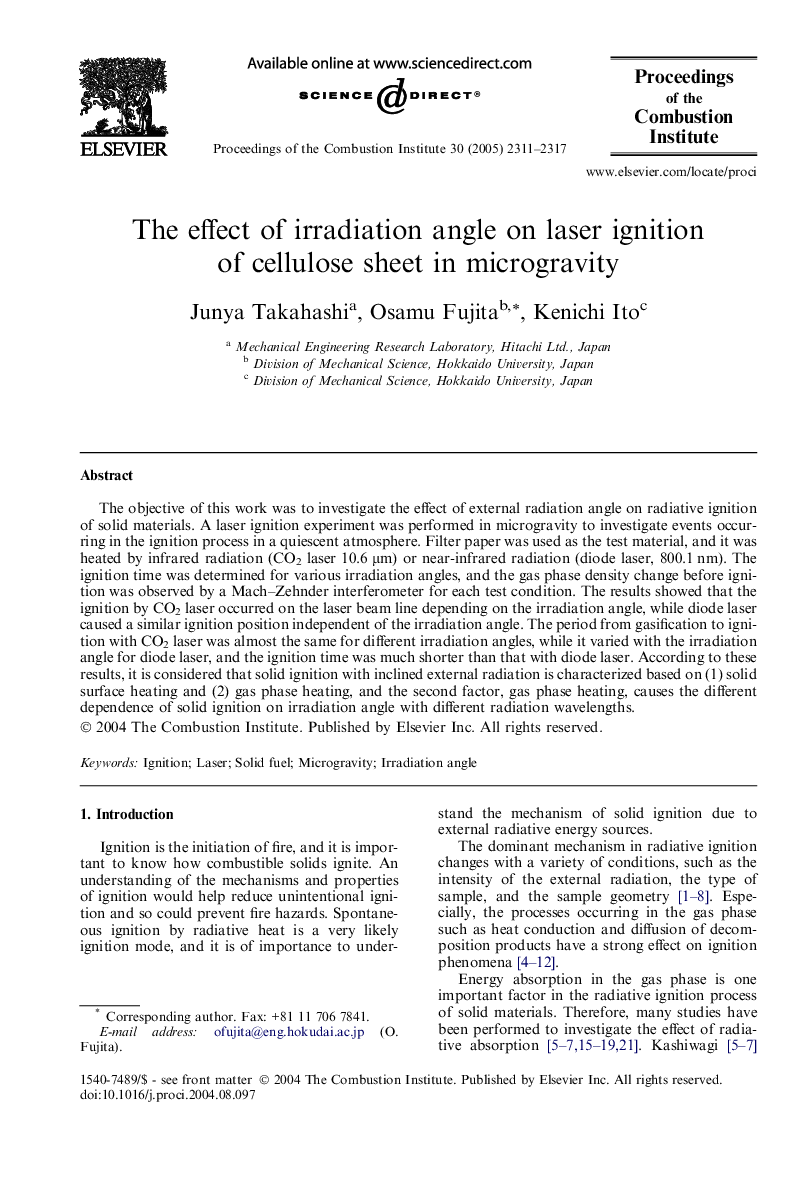| Article ID | Journal | Published Year | Pages | File Type |
|---|---|---|---|---|
| 240978 | Proceedings of the Combustion Institute | 2005 | 7 Pages |
The objective of this work was to investigate the effect of external radiation angle on radiative ignition of solid materials. A laser ignition experiment was performed in microgravity to investigate events occurring in the ignition process in a quiescent atmosphere. Filter paper was used as the test material, and it was heated by infrared radiation (CO2 laser 10.6 μm) or near-infrared radiation (diode laser, 800.1 nm). The ignition time was determined for various irradiation angles, and the gas phase density change before ignition was observed by a Mach–Zehnder interferometer for each test condition. The results showed that the ignition by CO2 laser occurred on the laser beam line depending on the irradiation angle, while diode laser caused a similar ignition position independent of the irradiation angle. The period from gasification to ignition with CO2 laser was almost the same for different irradiation angles, while it varied with the irradiation angle for diode laser, and the ignition time was much shorter than that with diode laser. According to these results, it is considered that solid ignition with inclined external radiation is characterized based on (1) solid surface heating and (2) gas phase heating, and the second factor, gas phase heating, causes the different dependence of solid ignition on irradiation angle with different radiation wavelengths.
